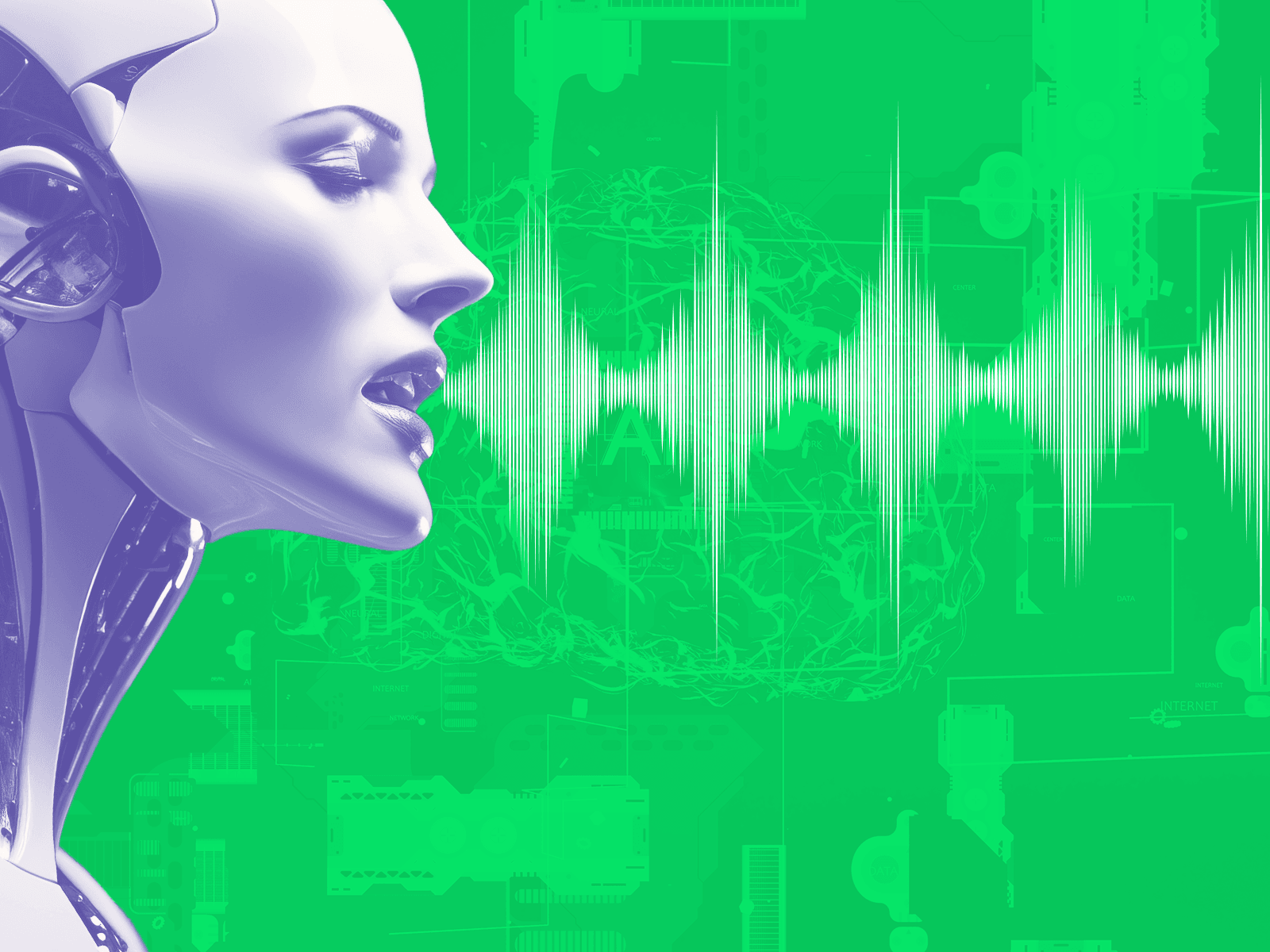5 Exciting Ways AI Can Be Used In Tennis

Illustration: © AI For All
Not every sport is as well suited to the implementation of AI as tennis is. The sport is data-driven at every level, and because of its technical nature, true and accurate data is becoming more important than ever.
With athletes at the top of their game looking to gain every advantage possible, AI might be the difference maker. That’s because, with the help of AI, we are suddenly able to spot patterns within match play data that a human would never be able to see. Because tennis produces so many data points in just one match, the sport hasn’t been shy of accessing data to feed machine learning systems to accelerate the accuracy of AI in the sport.
It’s also an exciting time for recreational tennis players who are looking to improve their game. With AI technology becoming more and more readily available, players are enjoying a whole lineup of new AI-driven offerings that are providing innovative and creative solutions for players to improve their game both physically and mentally.
Here are some of the exciting AI technologies currently being used in the game:
Electronic Line Calling (ELC)
The pandemic has accelerated the implementation of electronic line calling systems that use AI technology and cameras to determine whether a ball is in or out, within 3.6 millimeters of accuracy. The prominent technology currently used on tour is called Hawk-Eye.
It uses a web of cameras placed around the court alongside AI and data to project an estimation of where the ball will bounce by recreating a 3D model of the shot, which is what fans see on TV screens at home and the court.
The men’s professional tour, The ATP, has recently committed to implementing electronic line calling at all tournaments by 2025, doing away with human line judges altogether. While the technology has reached the desired level of accuracy on grass and hard courts, testing is still finalizing on clay courts.
That’s because this surface is “loose” and moves, making accuracy harder to determine at times. Rival companies of Hawk-Eye such as Foxtenn have been piloting systems that may offer a better fit for the clay in the next two years.
Virtual Training Tools
AI advancements have also been rolled out in virtual training tools that are flooding the market for players at all levels of the game. One of the most exciting and potentially most beneficial is Sense Arena, which uses virtual reality to allow players to simulate real tennis scenarios off the court.
In particular, the product is geared to supporting a player’s mental development. It does this by offering a variety of training sessions that simulate different skills required to win a tennis match. For example, let’s say you know you’re playing against a player who likes to come to the net a lot.
In Sense Arena, you can practice hitting passing shots at game speed all from the comfort of your own home. So not only can you use this to prepare for matches, but players who are injured can also use this technology to keep their game sharp while they recover, something that is usually extremely challenging to simulate.
SwingVision is another technology that’s available for all levels of players that uses AI technology and a simple phone camera. SwingVision’s AI processes video in real-time to offer three key benefits. First, the app creates customized highlights that automatically cut out the time between points and make a 2-hour match viewable in 30 minutes.
With smart filters, you can review all of your forehands or just your backhands or only rallies over 5 shots, among other things. You can also view the ball speed, the type of spin used, your shot placement, win percentage, and more. The latest iteration also features an integration with your Apple Watch to challenge line calls in real-time and watch a replay of the shot on your watch.
Researchers at Stanford University are also working on an exciting AI model that simulates the playing style of the world’s best tennis players. Using machine learning, researchers were able to use game footage of players such as Roger Federer and Serena Williams to simulate a real match in a virtual world.
The AI learns about the typical strategies and shot patterns of each player and can recreate this in a match-like setting. It can even extrapolate how a match may have played out differently had a single shot landed in a different location. The technology could be used to create a video-game-like training tool that allows you to practice against certain top players virtually.
In Game & Post-Match Analysis
IBM’s AI and Watson capabilities are connecting fans and journalists to the game in deeper and more intimate ways than ever before. The two new interactive AI-enabled innovations are Open Questions With Watson and Match Insights With Watson Discovery.
Open Questions with Watson employs Natural Language Processing (NLP) capabilities in IBM’s Watson Discovery, IBM Project Debater, and custom AI algorithms to generate and moderate a public conversation during the tournament over questions like “Is Serena Williams the best player in tennis?” and “Does Pete Sampras have the best all-around tennis game?”
Match Insights with Watson is now providing fans with a “tip sheet” for each match. It used Watson Discovery NLP technology and custom Natural Language Generation algorithms to pore over millions of written articles from the news, sports journalism, and other sources, to glean the most relevant facts and insights, and write short, data-rich articles to raise the curtain on each match-up.
The technology is smart enough to keep an eye on as many as 18 individual matches at a time and can rank the most entertaining points from every match by analyzing player reactions and listening to the sound of the crowd’s reaction.
This type of data collection can give us answers to questions we never thought possible to determine. For example, is player performance affected by the quiet of the court at Wimbledon or the constant chatter and rumble at the U.S Open?
This amount of data collection and analysis can of course also benefit the players, not just the fans. Researchers at the Queensland University of Technology (QUT) in Australia are using the data collection from tennis tournaments to go a step further and predict the shots and players a player might use.
The algorithm called Semi-Supervised Generative Adversarial Network architecture can mimic the brains of the top players who were already trying to predict their opponent’s next shot. The system can predict about 1,000 shots in 30 seconds.
The system, given the data on a particular player, could predict how that player would hit the ball on break point if a server went either down the line or out wide. It could also predict the likelihood that a particular player will try to beat an opponent at the net by hitting a lob or passing shot– and how that shot selection might change at different stages of a match. As the technology improves, the possibilities in terms of what information that offers players in their match preparation is endless.
Player Protection
It’s no secret that public personalities are often victims of cyberbullying and harassment. With more athletes raising the concern about mental health around the sport, tournaments are finally starting to take steps to support players in their virtual worlds as well as when they’re on the court competing.
At this year’s Roland Garros (French Open), the tournament has rolled out a new AI-driven software made by BodyGuard.ai. Players can integrate the BodyGuard technology with their social media accounts to filter out abusive comments and blocks abusive remarks.
The company states a team of linguists has created word patterns that can be updated in real-time which would help it filter out abusive comments, adding: “The aim is to let nothing slip through the net while being careful not to be too censorial.”
The introduction of this technology is expected to be rolled out at more tournaments and Grand Slams in the future to contribute to a more positive and supportive online environment for the players during competitions.
Equipment Evolution
The integration of AI can also be seen in the evolution of the sport’s most essential equipment. Leading racquet manufacturer, Babolat has rolled out a series of racquets that feature built-in sensors which can be connected to a person’s phone to receive dynamic feedback on performance.
An accelerometer calculates the direction and speed of the racquet, the gyroscope measures its rotation to tell you more about the spin rate, and the piezoelectric sensor measures the vibrations felt through the racquet that indicates how accurately a player hits the “sweet spot.” This data can then be used to quickly spot patterns and discrepancies to help improve the player’s performance. This evolution in equipment is a perfect example of IoT and AI combining to provide solutions in the sport.
Another example of AI creeping its way into our equipment is the use of “smart” dampeners. Demapeners are traditionally used to reduce vibration felt in the racquet, but their actual benefits are largely debated with some experts suggesting it’s more of an aesthetic choice than anything else. So if you’re going to use a dampener, then why not make it smart?
Qlipp is a sensor that’s placed on the body of the strings much like a traditional dampener. Similar to the sensors in Bablot’s racquets, Qlipp connects via Bluetooth to your phone and collects data on a player’s strokes, speed, accuracy, and sweet spot vibrations. It can also be programmed to track stats during the game. This likely isn’t an add-on that the pros would use, but for recreational players, having access to these stats and data points is like having a coach in your back pocket.
In summary, tennis is a sport that’s prime for AI use cases. The sport generates millions of data points per match that can be used to enhance the game at all levels. As AI continues to progress, we can expect to see AI being a key difference maker for those looking to close in on the most elite levels of the sport.
Sports
Author
Eliza is a Partner Manager at IoT For All. Eliza's passion lies in helping start-ups scale and grow. With a particular skill in big-picture thinking and organization, Eliza is able to help both small businesses and large corporations achieve a more meaningful digital presence to speak to their community and serve their purpose. In her spare time, you can catch her playing tennis and streaming multiple sporting events simultaneously.
Author
Eliza is a Partner Manager at IoT For All. Eliza's passion lies in helping start-ups scale and grow. With a particular skill in big-picture thinking and organization, Eliza is able to help both small businesses and large corporations achieve a more meaningful digital presence to speak to their community and serve their purpose. In her spare time, you can catch her playing tennis and streaming multiple sporting events simultaneously.









